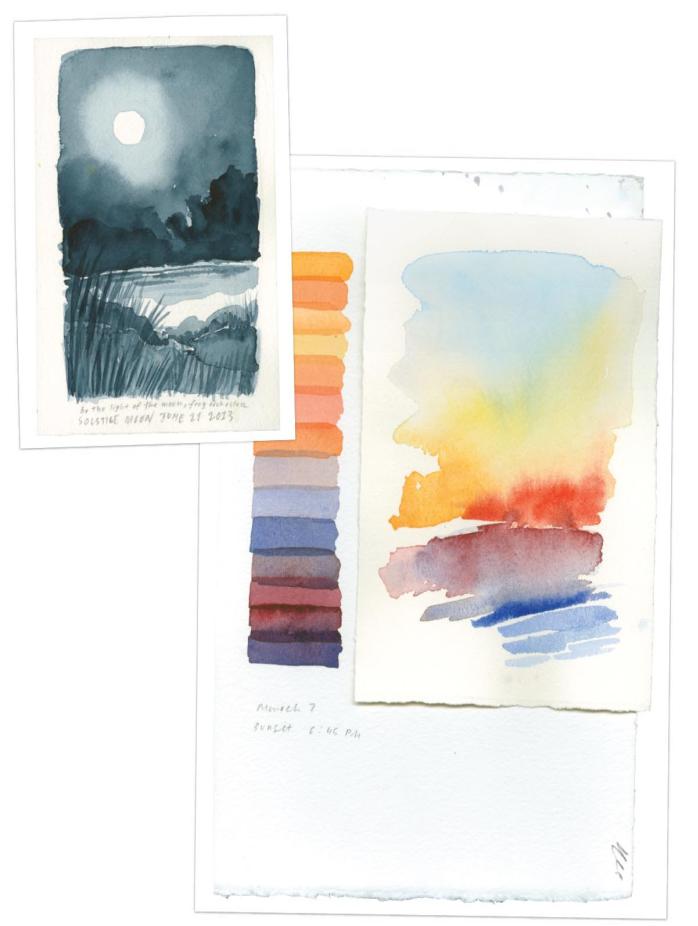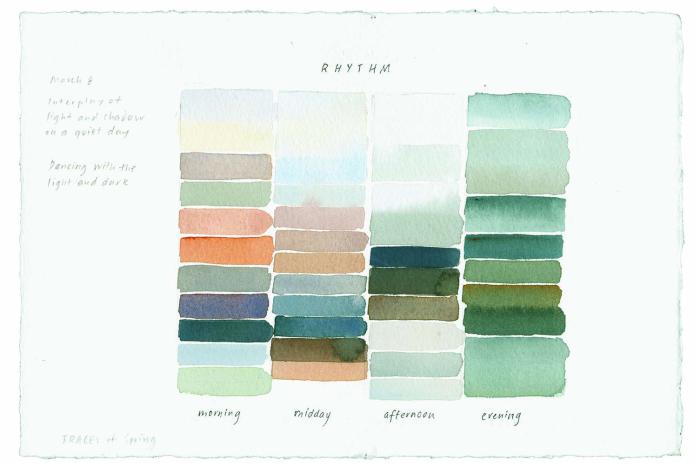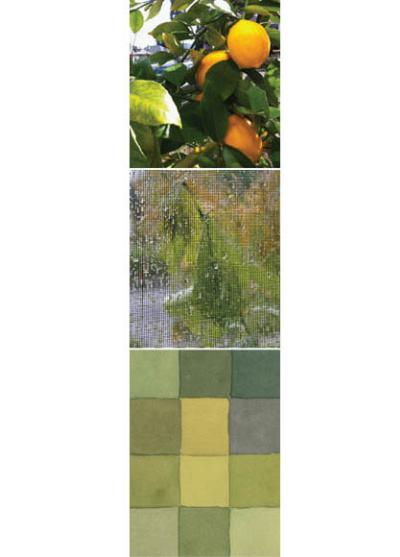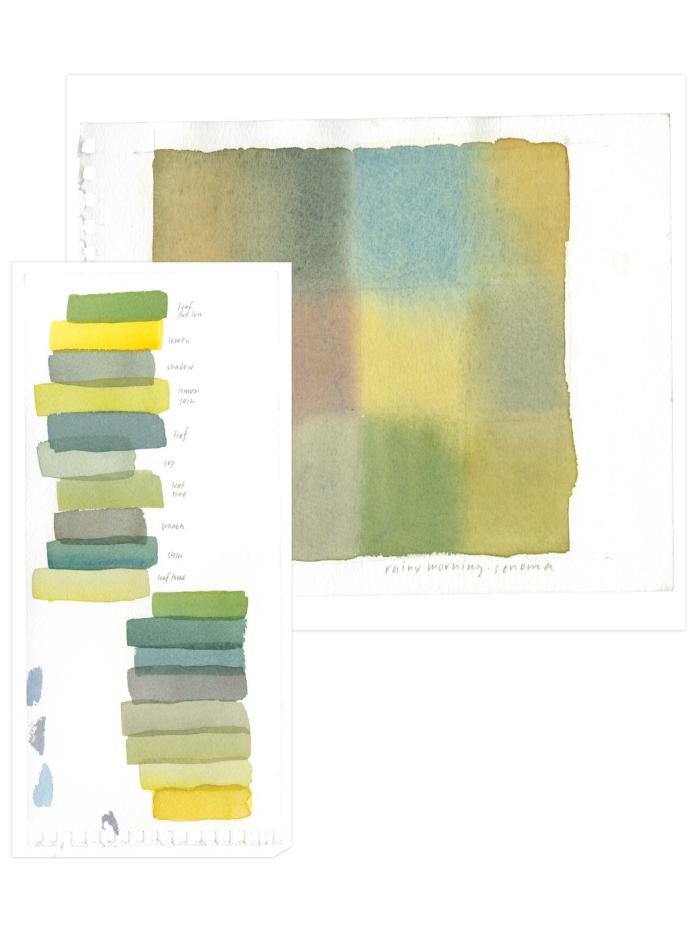
- •Acknowledgments
- •Introduction
- •Landscape
- •Ocean/Sky
- •Light
- •Wildflowers
- •Fog, Mist, and Haze
- •Forest, Lichen, and Moss
- •The Colors of Point Reyes National Seashore
- •Materials
- •Essential Equipment
- •Optional Equipment
- •Preparation
- •Paper Size & Grid
- •Pigments & Color Theory
- •Technique
- •Brush Marks
- •Painting
- •A Note on the Photographs
- •Habitat
- •Light
- •Weather
- •Seasons
- •Seasons: A Year in Color
- •Antigua, Guatemala
- •Lake Atitlán, Guatemala
- •Pátzcuaro, Mexico
- •Luxor, Egypt
- •The Dead Sea, Jordan
- •Petra, Jordan
- •Lake Issyk-Kul, Kyrgyzstan
- •Newport, Pennsylvania
- •Barney’s Joy, Massachusetts
- •Sacred Valley, Peru
- •Dominica, West Indies
- •Isle of Skye, Scotland
- •Inverness, Scotland
- •Mitchell, Oregon
- •New York, New York
- •San Francisco, California
- •Portland, Oregon
- •Big Picture
- •Detail
- •Sky Patch
- •Terrain
- •Rocks
- •Water
- •Color Walk
- •Color Memory
- •Naming Colors
- •Color Mixing
- •Primary and Secondary Colors
- •Tertiary Colors
- •Analogous Colors
- •Complementary Colors
- •Value or Tone
- •Color Temperature
- •How Many Greens are there?
LIGHT
Light gives birth to color. Notice where light lives—on the facade of a building, on the back of a bird flying through the sky, in a sunflower tracing the path of the sun. Some colors are naturally light in feeling (yellow) and others are dark (purple, ultramarine blue). Light colors seem to float, while darker colors feel rooted.
Light changes subtly as the sun shifts with the time of day and the seasons. My favorite times to catch the color of a place are in the early morning, later afternoon, and at sunset, when colors take on more depth. Low in the sky, the sun sends out a warm golden glow and the long shadows add rhythm and texture. Summer days are wonderful for painting outdoors because of the long hours and abundance of light.


PRACTICE
•Paint a series of palettes at the same time each day—either the first hour of light after sunrise or the last hour of light before sunset (both called the “golden hour”). In the city, observe the color in the shadows cast by the buildings. Work quickly, as the light changes fast. Try to capture the patterns of light and dark. Don’t worry if you don’t get it right—it will come back again tomorrow.
•Track color throughout the day, making a connection to the rotation of the earth. Be aware of warm and cool tones and the interplay of light and shadow. Select a simple view and create palettes at early morning, midday, and evening. On a sunny day, colors are typically warmer in the morning and shift to cool as the sun arcs overhead, then back to warm as the sun is setting. Even on foggy or cloudy days, you can sense a brightening and the movement of the sun.

WEATHER
Imagine a hot, dry sun in the desert, a blizzard in Chicago, or spring rain along the coast. Rain, snow, sleet, sun, wind—how do they change what you see in a place?
During a winter storm in Inverness, California, rain, mist, and fog soften the view, creating muted notes of harmonious color. This is the day to paint wet on wet. Painting with more water can capture the feeling of a rainy day, accentuating place and mood. The light is soft and the colors run together. There are no edges.
In New York City, I expect to paint monochromatic cityscapes but wake up to deep snow. Today, the world is brilliant white, blue, and purple. Bright sun brings out the color and the contrasts: the inky black of tree bark and branch against white snow. Water towers have little white triangular snow hats. I see drifts of snow and the yellow blur of taxis.


PRACTICE
•See if you can capture the mood of the day’s weather through your colors. Paint during rain, snow, fog, and sun and compare the differences. How do different weather conditions create a new set of colors to observe and paint?
